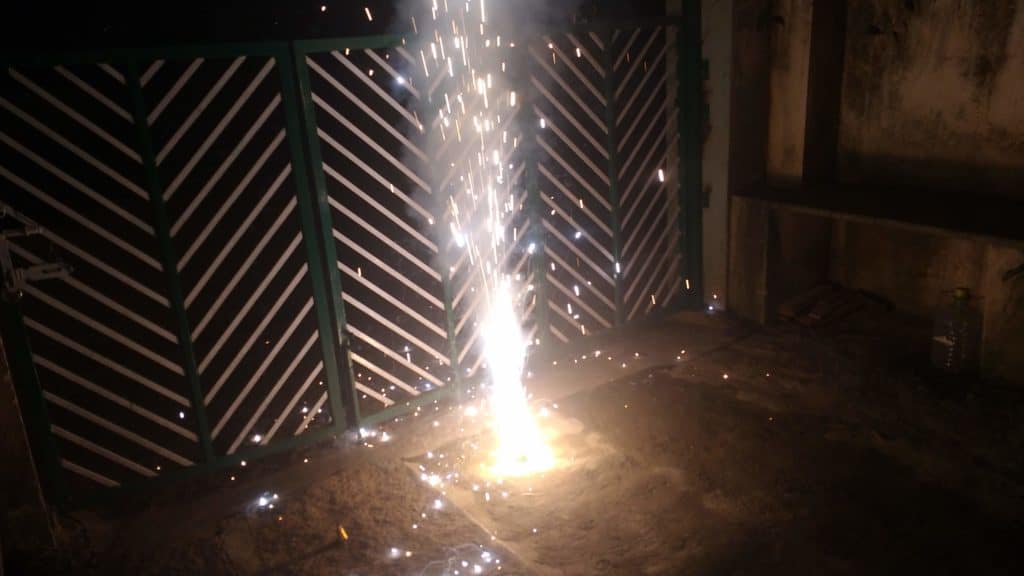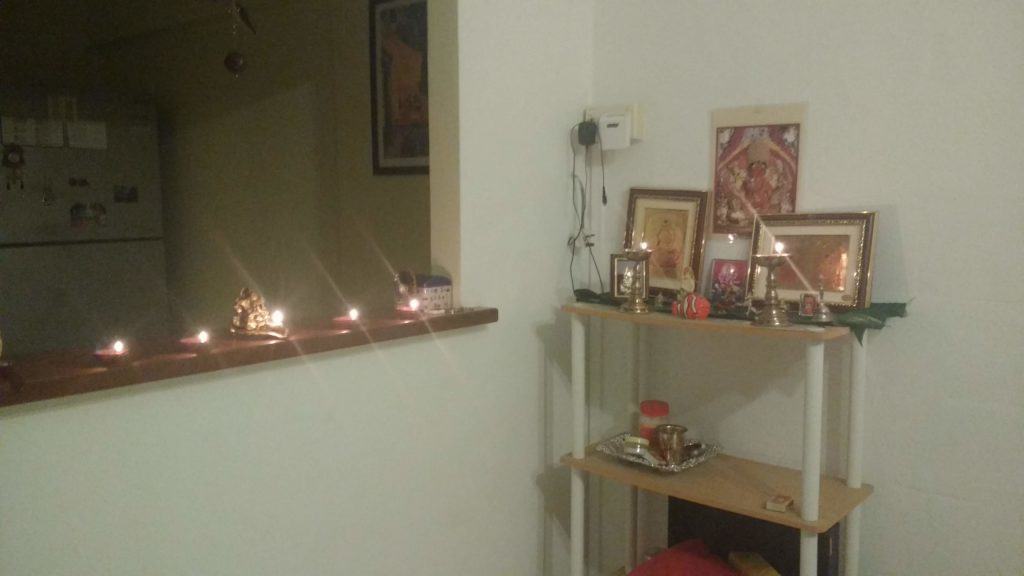Happy Deepavali!
‘Times have changed. Today’s generation has changed a lot. Our times were so good. Values have eroded…’ Such complaints are made by every generation. Even Aristotle is said to have complained about the next generation! Our children are already complaining about how times have changed so much since they were children. Even those who struggled during their childhood have memories to cherish from their childhood.
‘Why do you always talk of the past and become nostalgic about every aspect?’ ask my siblings and friends. Honestly, I am just enjoying the posts on Bangalore – Photos from a Bygone Age, a Facebook page dedicated to “reminiscences connected to Bangalore from the past”.
While some people say Bangalore of the ‘60s was the best, some say Bangalore of ‘70s was the best, others say ‘80s, ‘90s and so on. We generally do not like drastic changes, though we adopt changes gradually all through our lives. Maybe most of us enjoyed childhood and youth the best because we could detach ourselves from the previous generation’s difficulties and lived in our fantasy lands where everything was perfect.
We could romance, love and play around as much as we wanted, in those imaginary lands. This is why we get nostalgic for those times. Today, however much I try to take my mind off the concurrent problems that are bothering me or my family or my country or my planet, I do not succeed. Even my dreams become nightmares!
Everything seemed so simple, pure and unadulterated in my childhood, including festivals. It’s sad that today such simple things we enjoyed in those days are politicised, and hence the happiness and joy that festivals gave me as a child are gone. I am not here to discuss the politics behind the criticism of festival celebrations. I am here to just express the difference between the celebrations of our times and the present times.
This year, Deepavali is being celebrated on November 14 all around the country. There has been so much hue and cry about banning crackers, manufacturing of green crackers and air pollution for the last few years, right?
As a child, I didn’t know anything about where the crackers came from (before they arrived at the nearby outlet): child labourers risking their lives in the industries, the pollution caused by burning of crackers, the accidents that maim and kill so many children and adults every year, the anguish and pain caused to animals and birds by the sound of crackers.
All I knew was the excitement that we children experienced during Deepavali. Though I personally was and am still scared of the noisy crackers, I enjoyed the festivity that the milder crackers like sparklers, flower pots and chakras spread.
Elders would start preparations for the festival well in advance. Middle class families would earmark a fund for Deepavali and start with the purchase of clothes for all members of the family and the domestic help.
‘Deepavali purchase ellaam aachaa?’ would be the standard dialogue during those months. Many mothers stitched new attire for the children as also blouses for themselves. Men were the privileged lot to go to tailors! Children were oblivious to the latest trend or fashion and wore whatever their parents bought or stitched for them.
About ten days before the festival, mothers would start planning the menu of sweets and savouries they would cook. We would go to the flour mills to make flours of rice, dal and wheat. Then the mothers would shop for nuts, oil, ghee and spices.
Almost a week ahead, the actual preparation would begin in all houses. The streets would get festive with the inviting smells emanating from houses – roasted flour, boiling oil, sugar and jaggery syrup, cardamom! We children would be running errands and assisting our mothers in pounding cardamom, kneading and rolling the dough that our mothers mix, making jamuns, etc. ‘Deepavali bakshanam ready aa?’ would be the next query among the women.
Two days before the festival, fathers would take their children to shop for fireworks. It was a sight at the firecracker shop, with colourful cartons and packets stacked to woo children! My father would have set aside a small portion of the budget for crackers, and we had to choose only as much as we could fit into that amount. Children would use their arithmetic skills to buy the most variety of crackers within the budget.

And once the crackers arrived, children would sit beside their parents and segregate the stock into four portions: for the previous night of Deepavali which is celebrated as ‘neeru tumbo habba’, when our mothers would wash the huge brass or copper handa (cauldron), decorate it with limestone, turmeric and vermillion and fill it with fresh water; the early morning of Deepavali; the evening of the same day and Tulasi Habba that would follow! A small portion would be allocated for the domestic help’s children, too.
Then these portions would be further divided amongst the children, based on their age group and aptitude! Many children loved the small red capes, which were least harmful and made a ‘putt’ sound. They would start bursting these on stones four or five days before Deepavali, announcing the arrival of the big event!
The roadsides would be littered with white dots of paper for days!
Come Deepavali, I could never sleep peacefully the previous night. My father would wake up at four in the morning and switch on the radio. The divine nadaswaram music would augur the festival. I would immediately wake up and then wake my sister and brother up. My youngest sister was yet to be born.
My mother would make us all sit on a mat, apply oil to our hair and perform the aarthi. We had only one bathroom and hence there would be a competition among the children as to who would bathe first. Of course, my mother would be the first and then I would somehow sneak into the bathroom for a quick shower.
By 4.30 in the morning, we would hear the sound of crackers, and I would get restless! By 5, I would be ready in my new dress and quickly go to the front yard with my portion of crackers. It was such a surreal experience to get out of the house in the chilly darkness of early morning to burn crackers. The smell of crackers all around still lingers in my mind.
I would be praying that the sun rise late. It was a competition amongst the children. Whose yard had the most paper waste after dawn? As dawn set in, I would sweep the yard, spray water mixed with cow-dung and make huge rangolis with white rangoli powder on the fresh green base.

Elders would visit friends enquiring, ‘Ganga snaanam aachaa?’ All waters would be equated to the holy water of river Ganga.
Then it would be breakfast time when we got our normal breakfast along with the special eatables that my mother would have cooked for Deepavali. After breakfast, children would set out delivering packets of goodies to neighbours and friends. The house would be full of sweets and savouries from friends, which we would keep tasting every now and then.
In the evening, we would all light lamps around the house and start bursting the portion of crackers set aside for the evening. Deepavali would end by ten at night.

This was Deepavali during the 1960s and 1970s. However, as I entered college, the excitement of festivals started fading, as I lost interest in crackers personally and also we started realising the other side of crackers. I agree with all the arguments put forth by activists: the risks that children are put into in the industries, the dangerous kinds of crackers that result in so many accidents year after year, the noise and air pollution, and the extreme fear that animals go through.
Even so, I feel with certain strict restrictions and rules in place, harmless crackers could be allowed just for the three days in a year to ensure that our children and grandchildren get to enjoy what we all enjoyed.
Other kinds of crackers should never be sold to individual consumers, but a show of fireworks can be organised in open grounds for children to enjoy. This or that is not the only way. There could be something in between, which would retain the festivity and tradition while ensuring that problems are taken care of.
Now you know why I get nostalgic. Life was simpler those days. We could enjoy simple pleasures without guilt. You may call it ignorance or innocence, but I want all those moments back for today’s children. Deepavali is celebrated almost all over the country. I wish everybody a very safe, happy, bright, colourful and sweet Deepavali! Light lamps and spread love and friendship all over.
Also read:
► Opinion: “We love Deepavali – we just need to cancel the noise and smoke…”
► ‘Green’ or otherwise, crackers are sheer agony for animals
► Is your city allowed to burst firecrackers this Diwali?
► Have a fire-safe Deepavali while also enjoying yourself!
[Disclaimer: This article is a citizen contribution. The views expressed here are those of the individual writer(s) and do not reflect the position of Citizen Matters.]
Bangaloreans local language is kannada,they ask “habba jora”, “habbad preparation hegide” like these.And not in tamil that too in those days there was hardly any tamil.
These were my memories of my childhood, which I spent in HMT Colony, Hyderabad, where we were surrounded by many Tamil families! I agree, in Bangalore it is ‘Habba jora?’ or ‘en special?’ or ‘Habbad hosa battena?’ ‘Sanjappa superpa!’ Thanks for reading!
whose bengaluru is it? ganga snana aacha? you mean to say banglore was in tamilnadu